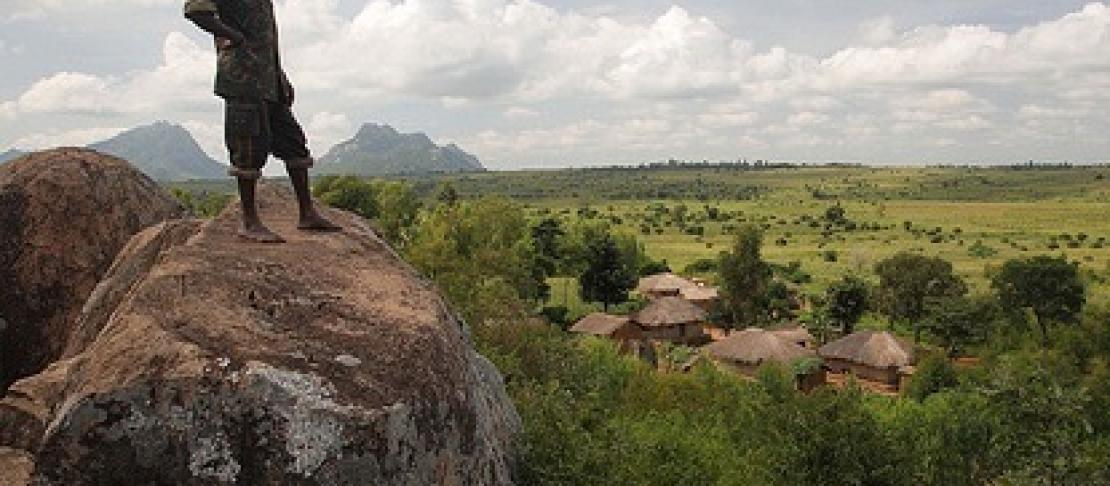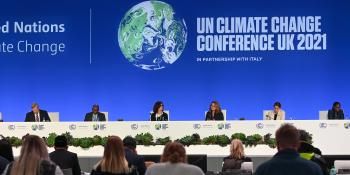Another Missing Link in Climate Change Policy: Trees Outside Forests

by Meine van Noordwijk, and Peter Minang
This year, forests remain on the climate change agenda, building on several years of policy progress for Reducing Emissions from Deforestation and forest Degradation (REDD+) as well as the current International Year of Forests. Attention is also growing on how agriculture can reduce emissions, as well as its fundamental role in ensuring climate adaptation in most of the world. With these developments, it is easy to overlook the ‘in-between’ issues of trees in agricultural landscapes. Agroforestry and the deliberate use of trees was framed over 30 years ago as an alternative to ‘open field’ agriculture as the major pathway for intensification, as well as recognizing the roles farmers play in domesticating forests.
Agroforestry blurs the agriculture-forest interface. However, climate change policies and emerging institutions perpetuate a divide between agriculture and forestry, creating separate rules and incentives to govern each sector. This divide loses sight of Agroforestry as a major part of the climate change solution
Most existing climate data, and the models that have been calibrated on them, refer to a tree-less landscape. Most synoptic weather stations measure temperatures, humidity and wind speed outside of the direct zone of influence of trees, preferably above a well-maintained grassy ground cover. Trees would ‘disturb’ the measurements. Climate change models predict shifts in temperature, humidity and evapotranspiration that will impact crop production. But, by and large, the predicted changes fall within range of the influence that trees can have on microclimate. Trees can cause several degrees Celsius shifts in minimum, maximum and average temperature.
To do justice to the range of options farmers in fact have to respond to climate change, we need an explicit representation of at least three types of climate that are feasible at any location: open-field agriculture climate maps (these we already have and they are labelled ‘climate maps’), medium tree cover or agroforestry climate maps, and full tree cover or forest climate maps. The difference between the three, together with the predicted change in each with global climate change, will provide a better basis for decisions on the desirable density (and type) of trees in landscapes that serve agriculture as well as other societal needs.
The World Agroforestry Centre is currently seeking partners and investors to work on such a representation of the world’s climates, that recognizes trees outside forests as an important element of the adaptation options for agriculture.
On the mitigation side there seems to be a growing awareness that the need for a single forest definition in delineating the scope of REDD+ is a challenge to both the efficiency and the perceived fairness of the policies. An alternative is emerging in the form of ‘land-based nationally appropriate mitigation actions (NAMAs). The political track for NAMA and REDD+ is different, although both were treated as the same in the Cancun agreement.
The possibility of addressing all land use issues on climate change in an integrated fashion deserves full attention and support, as in reality, the landscapes where farmers and forest-edge communities make a living cannot be readily dissected. Under the working title ‘Reducing Emissions form All Land Uses’ (REALU) we are exploring the practicality and political support for such an integrated approach to the agriculture-forest continuum, with encouraging results so far.
Meine van Noordwijk is Chief Science Advisor at the World Agroforestry Centre. Peter A Minang is the Global Coordinator of the ASB Partnership for the Tropical Forest Margins.
The World Agroforestry Centre is a partner in the CGIAR Research Program on Climate Change, Agriculture and Food Security (CCAFS), leading work on pro-poor climate mitigation and making scientific knowledge useful for decision-makers and farmers (linking knowledge with action).


